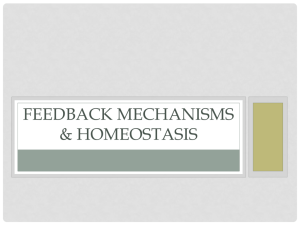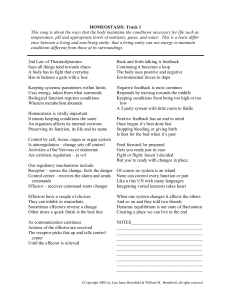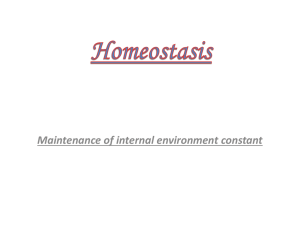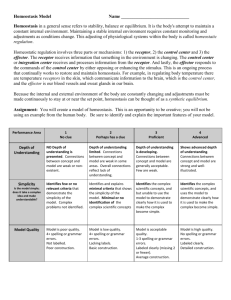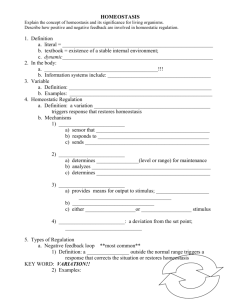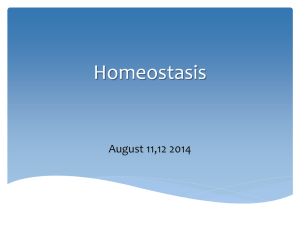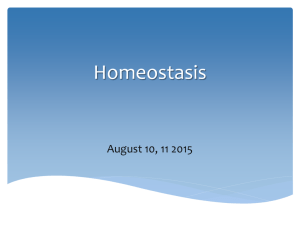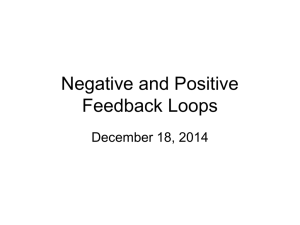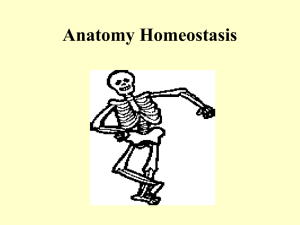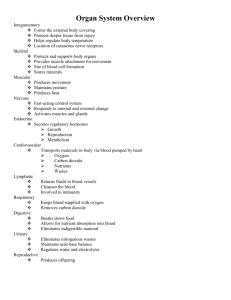Week 1 PPT (Homeostasis)
advertisement
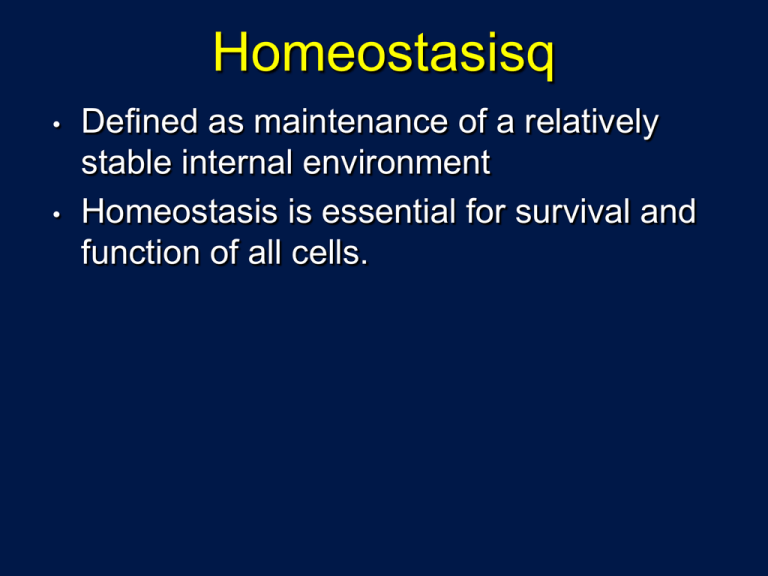
Homeostasisq • • Defined as maintenance of a relatively stable internal environment Homeostasis is essential for survival and function of all cells. Maintenance of Homeostasis • Nervous system • • • Controls and coordinates bodily activities that require rapid responses. Detects and initiates reactions to changes in external environment and internal environment. Endocrine system • Secreting glands of endocrine regulate by release of hormones. Control of Homeostasis • Homeostasis is continually being disrupted by: • External stimuli • • heat, cold, lack of oxygen, pathogens, toxins Internal stimuli • • • • Body temperature Blood pressure Concentration of water, glucose, salts, oxygen, etc. Physical and psychological distresses Stimuli Demo • Ice Water and Heart Rate/Blood Pressure. Homeostasis Components • There are three main components (players) involved when homeostasis is disrupted by a stimuli. • The Receptor The Control Center The Effector • • Receptors • The receptor is an organ or sensor that receives the chemical signal and communicates to the next Component ( the control center). • In the case of blood sugar the liver is the main receptor. Homeostatic Control Systems • The control system must be able to: • • • Receives signal from the receptor. It also can sense deviations from the norm its self. Integrate this information with other relevant information. Sends a signal to the appropriate organ or gland to make the necessary adjustment. Generally the Brain (hypothalamus) is the control center. However, the pancreas is its own control center for blood sugar. Effector • The effector is the component that causes the change. It sends out the chemical to deal with the stimulus. • In the case of blood sugar the pancreas would be the effector because it sends out the insulin. Homeostatic Control Systems • Feedback - refers to responses made after change has been detected • Types of feedback systems • • Negative Positive Feedback Loops: Types • Negative feedback loop • • • original stimulus reversed (shut off) most feedback systems in the body are negative Positive feedback loop • • original stimulus intensified seen during normal childbirth Negative Feedback Loop Negative Feedback & Blood Pressure • • • • Baroreceptors in walls of blood vessels detect an increase in BP Brain receives input and signals blood vessels and heart Blood vessels dilate, HR decreases BP decreases Positive Feed Back • In this case the stimuli causes an increase in the original stimulus. Positive Feedback during Childbirth • • • • • Stretch receptors in walls of uterus send signals to the brain Brain induces release of hormone (oxytocin) into bloodstream Uterine smooth muscle contracts more forcefully More stretch, more hormone, more contraction etc. Cycle ends with birth of the baby & decrease in stretch Feed Back Graphs • To be Drawn.
